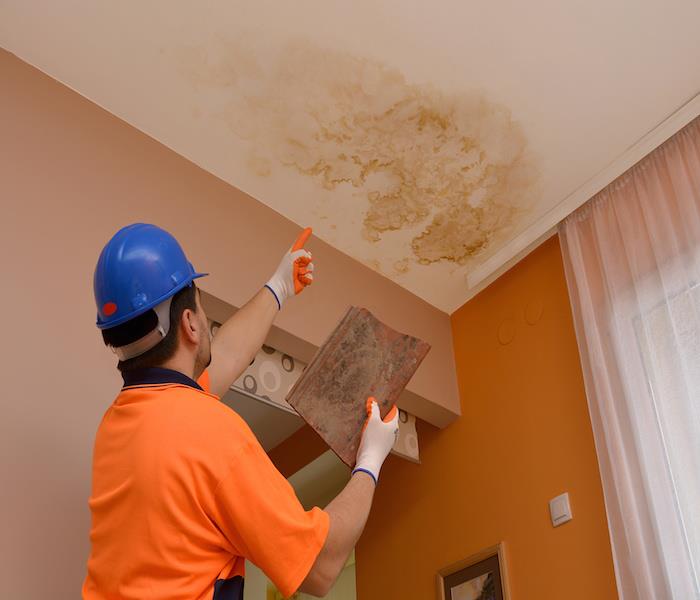6 Places to Check Your Home for Water Damage
9/26/2016 (Permalink)
In just a matter of hours, a simple leak can turn into devastating water damage. Due to how quickly water can cause significant damage in a home, it’s important to take immediate action to prevent the damage from getting worse. The following are six places you can check in and around your home to make sure you’re not at risk of water damage.
Take a Look at Your Walls and Ceilings
The easiest way to tell whether or not you have water damage is by checking the walls and ceilings. If there are stains on the walls or ceilings, it’s likely that you have water damage. While you’re at it, take a look at the windows and door frames. Any unusual stains on them could be a sign that you have a leaky pipe or a leaky drain inside the wall. Other ways to check if you have water damage in your walls include cracks in the drywall, swollen parts of the wall, and areas that are unusually soft when touched on the wall.
Glance at Your Floors
Water damage has the ability to impact any type of flooring and can seep deep down into the sub floor. If you have any warping or buckling occurring in your floors, this is a tell-tale sign that you have water damage. This goes even more so if you have a basement. White or dark stains that appear on wood floors, damp carpeting, and if there’s a general smell of dampness or mold around the house, your floors have more than likely been affected by water damage.
Inspect Your Piping
If there are any leaks, water stains, or corrosion around the piping in your kitchen, bathrooms, laundry room, or basement, the cause is water damage. Also check your pipe connections to make sure that they are properly connected. If you have any missing or loose caulking around your bathroom fixtures, the likely cause is that water is seeping through. Additionally, any missing grout or signs of mold, be it visually or olfactory, will alert you that there is water damage in your home. Water heaters are a common cause of water damage in homes so check for any wet spots on the floor or any rust around the tank.
Inspect Your Basement
Water damage often occurs in the basement so, if you have a basement, be aware of the possibility that water damage could occur. This type of damage typically occurs to the flooring, baseboards, walls, and furniture. A lesser known problem that can occur due to water damage in basements comes from the odor of mold or mildew. This can cause health problems for occupants of the home. To make sure that there is no water damage in your basement, look around for any cracks, stains, rust, dampness, mold, or unusual odors.
Check Out the Attic
Being right underneath the roof, the last line of defense against the elements, an attic can be susceptible to water damage. If your attic shows any stains, mold, or any other signs of leaks, you need to take care of the issue immediately. While you’re up there, take a close look at the valley where two separate roof planes intersect. Typically, there’s flashing where the roof and wall meet as well as around any roof vents or chimneys. Inspect these to ensure that there are no openings where water could seep through. Any insulation in your attic should be dry and in good condition, as it’s there to protect your home from water. If you live in a colder climate, ice dams have the ability to form which could cause water to leak into the attic when snow melts or from ice on the roof.
Check the Exterior of the Home
Your roof is built to protect you from the elements, which includes water. So check your roof for any damaged flashing and missing, cracked, or curled shingles as these could allow water to seep into your attic. If you have standing water anywhere around the outside of your home, this could be troublesome. This could be due to poor drainage in your yard, leaky rain gutters, or your gutter spouts may not be sending the water that falls from the roof far enough away from your house. This water could damage the foundation of your home.
Avoiding water damage should be a top priority for any homeowner as it has the ability to cause thousands of dollars worth of damage. The best way to avoid water damage is to keep an eye out for any potential dangers around your home. These six places to check around your home will help you avoid such a fate. If you do end up suffering from water damage, the professionals at SERVPRO are your solution.






 24/7 Emergency Service
24/7 Emergency Service
